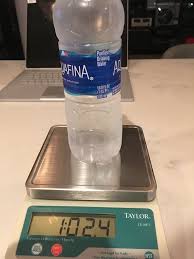Vacumetros: A Comprehensive Guide

Vacuum gauges, or “vacuómetros” as known in Spanish, are indispensable devices utilized in various industries, from automotive and aerospace to scientific research and manufacturing. These instruments play a crucial role in measuring and analyzing vacuum levels within enclosed systems, providing valuable insights into processes and ensuring optimal performance. Let’s delve deeper into the world of vacuum gauges, exploring their types, functionalities, applications, and significance across diverse fields.
Types of Vacuum Gauges:
- Mechanical Gauges:
- Bourdon Tube Gauges: Employing a bent tube sensitive to pressure changes, these gauges measure vacuum levels based on the tube’s deformation.
- Thermocouple Gauges: Utilizing the thermal conductivity of gases, these gauges measure vacuum by assessing heat transfer within the device.
- Ionization Gauges:
- Hot Cathode Gauges: Operating by emitting electrons and measuring the ions formed due to collisions, these gauges are efficient for ultra-high vacuum measurements.
- Cold Cathode Gauges: Employing ionization near a cathode surface, these gauges are robust and suitable for high vacuum environments.
- Capacitance Manometers: These gauges measure vacuum levels by assessing the change in capacitance caused by pressure-induced deflections in a diaphragm.
- Pirani Gauges: Based on the principle of thermal conductivity, these gauges gauge vacuum levels by measuring the temperature change of a heated wire exposed to a vacuum.
Functionalities and Applications:
- Process Monitoring: Vacuum gauges enable real-time monitoring of vacuum levels in manufacturing processes, ensuring consistency and quality in product output.
- Research and Development: In scientific research, particularly in fields like physics and material science, precise vacuum measurement is vital for conducting experiments and analyzing materials under controlled conditions.
- Medical Equipment: Vacuum gauges are integral to various medical devices such as vacuum-assisted wound closure systems and blood collection systems, ensuring safe and efficient operations.
- Aerospace and Aviation: Vacuum gauges aid in maintaining optimal conditions in aircraft systems, ensuring safety and performance by monitoring cabin pressure and other critical functions.
Significance:
The significance of vacuum gauges lies in their ability to provide accurate and reliable measurements, contributing to the efficiency, safety, and quality of numerous processes and systems. Proper vacuum level maintenance prevents equipment damage, ensures product quality, and facilitates the smooth operation of machinery and instruments.
Emerging Trends and Innovations:
In recent years, advancements in sensor technology have led to the development of more precise and compact vacuum gauges. Integrated digital interfaces, wireless connectivity, and compatibility with automation systems are becoming common features, allowing for easier data acquisition and analysis.
Conclusion:
Vacuum gauges, or vacuómetros, are indispensable tools across various industries, playing a critical role in maintaining optimal conditions, ensuring quality output, and facilitating scientific research. Their evolution continues to support advancements in technology and innovation, enabling more accurate and efficient vacuum measurements, thereby contributing significantly to diverse fields’ progress and success. As technology advances further, the future holds the promise of even more sophisticated and versatile vacuum gauges, revolutionizing how we perceive and manage vacuum measurements in various applications.





